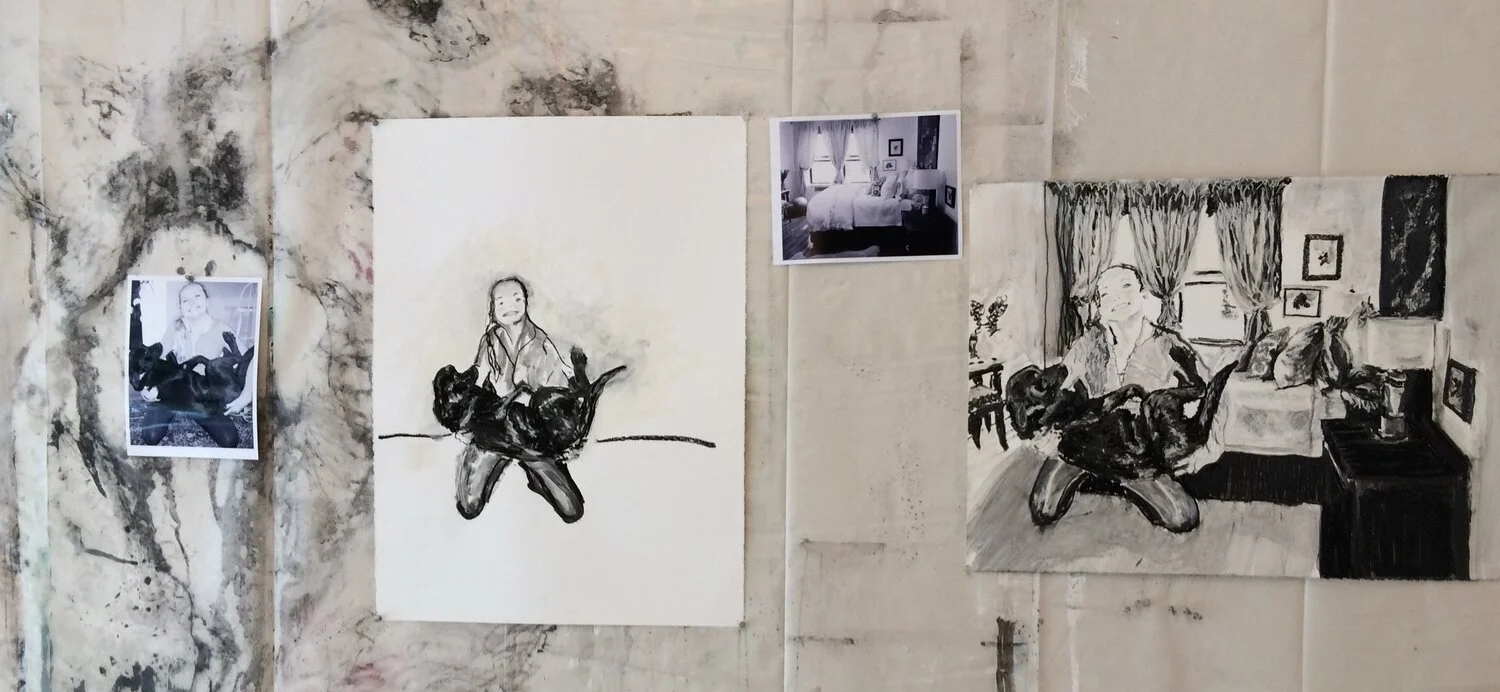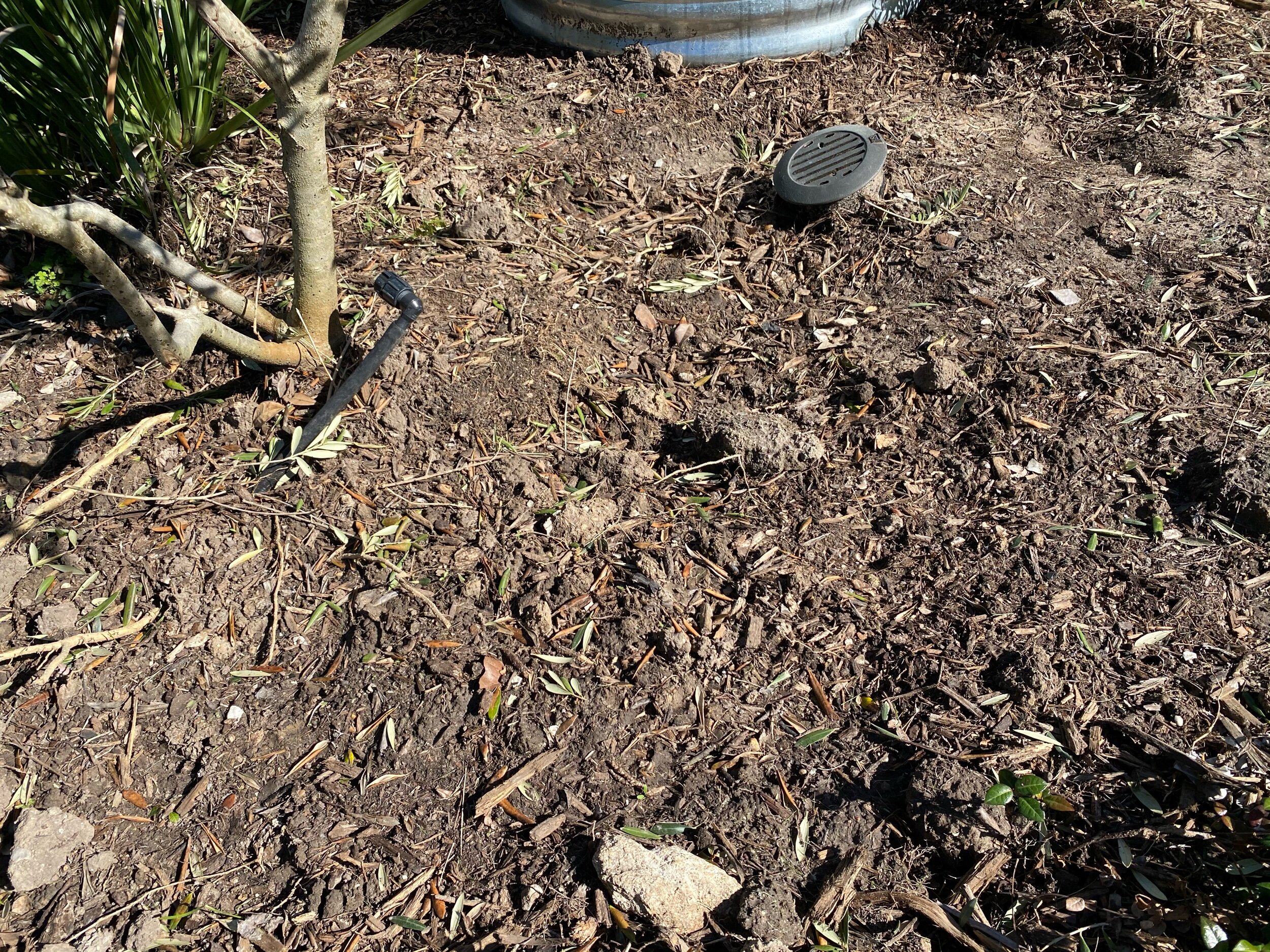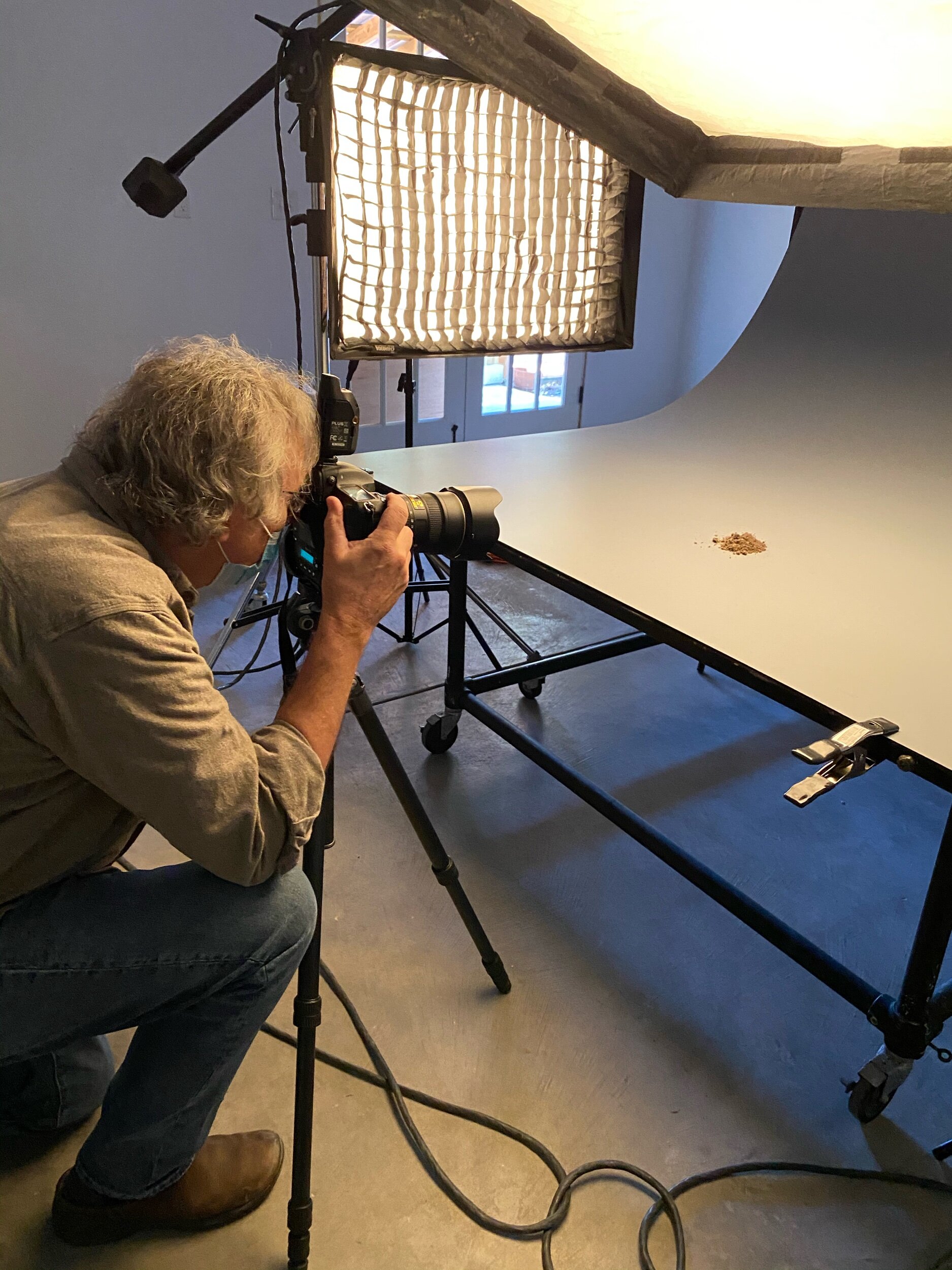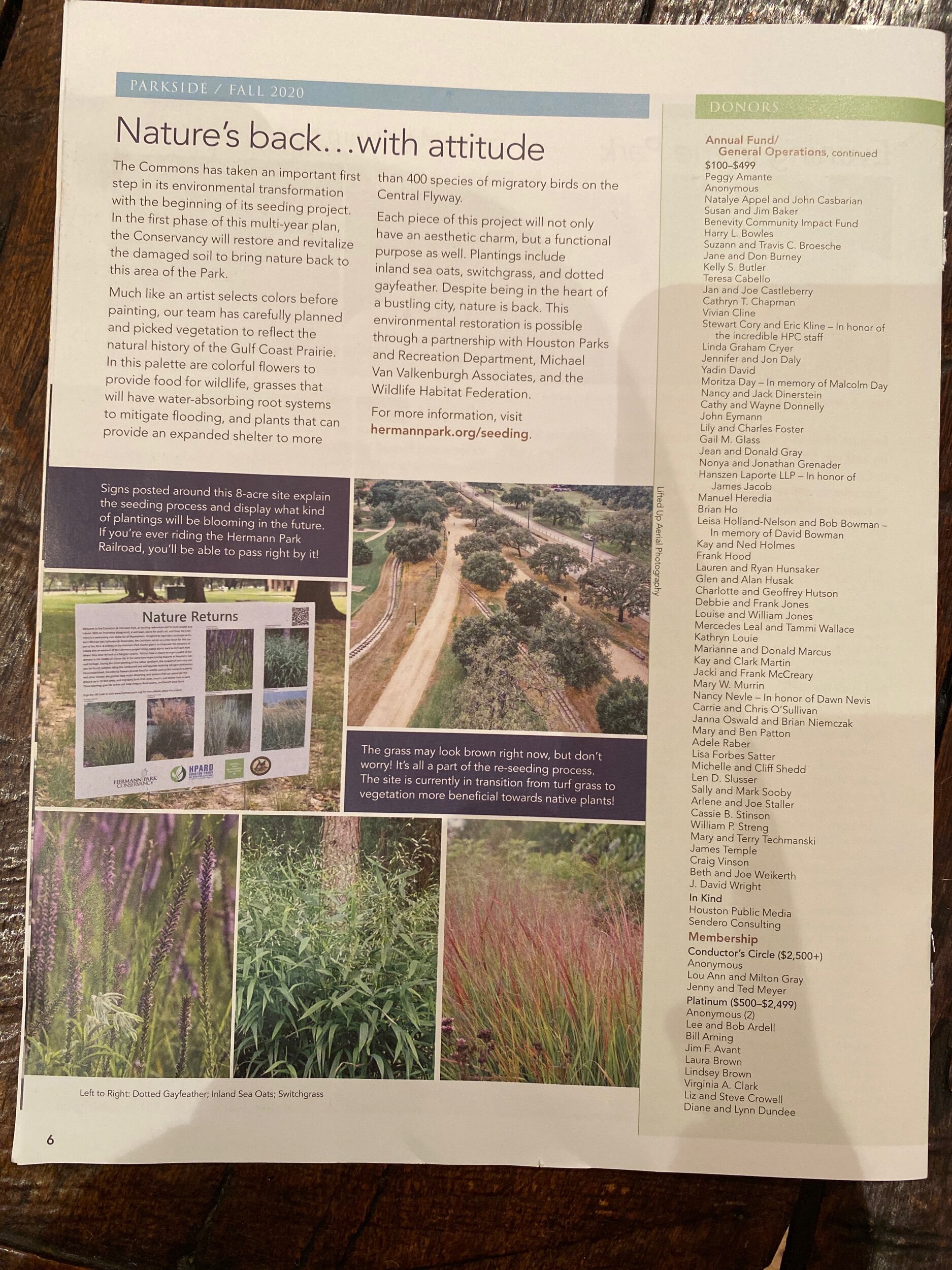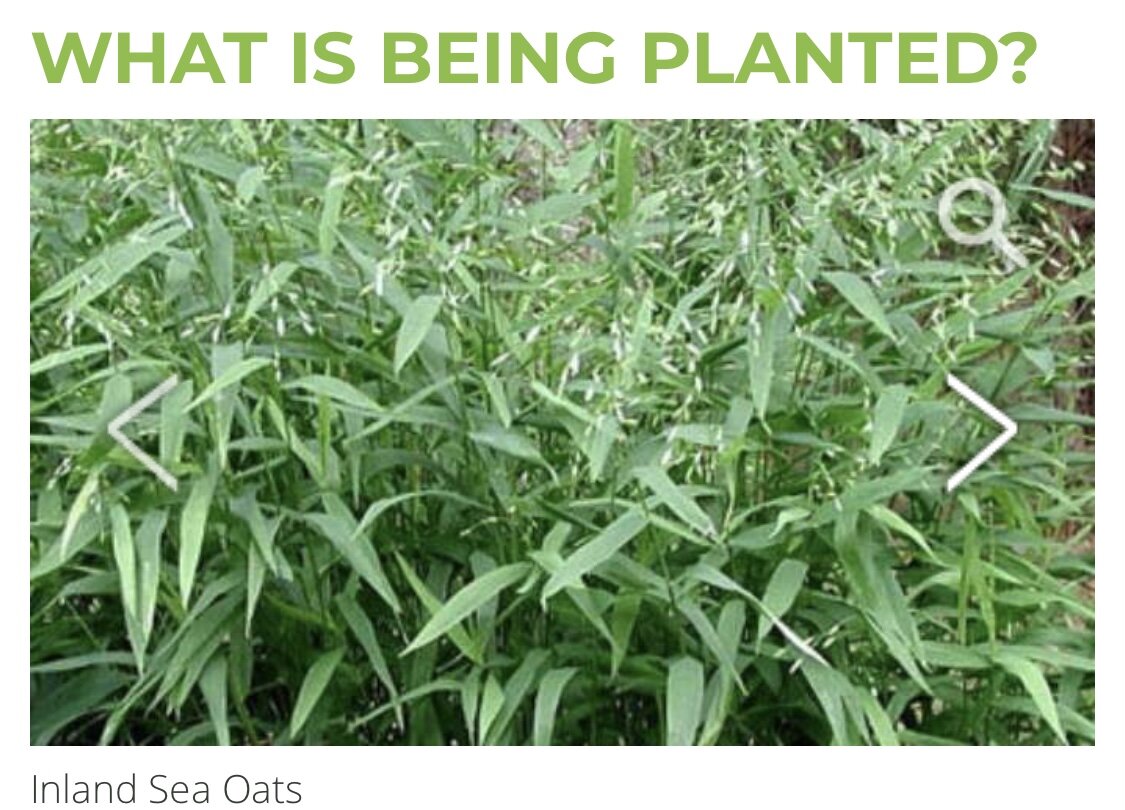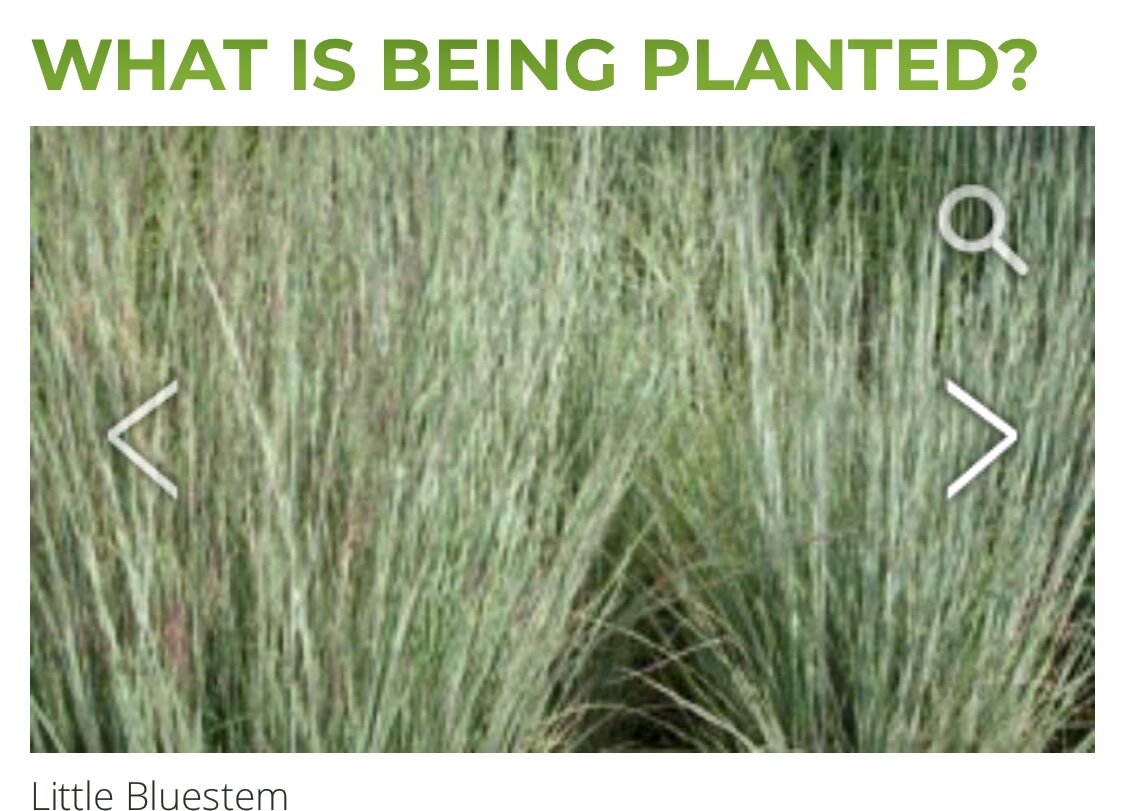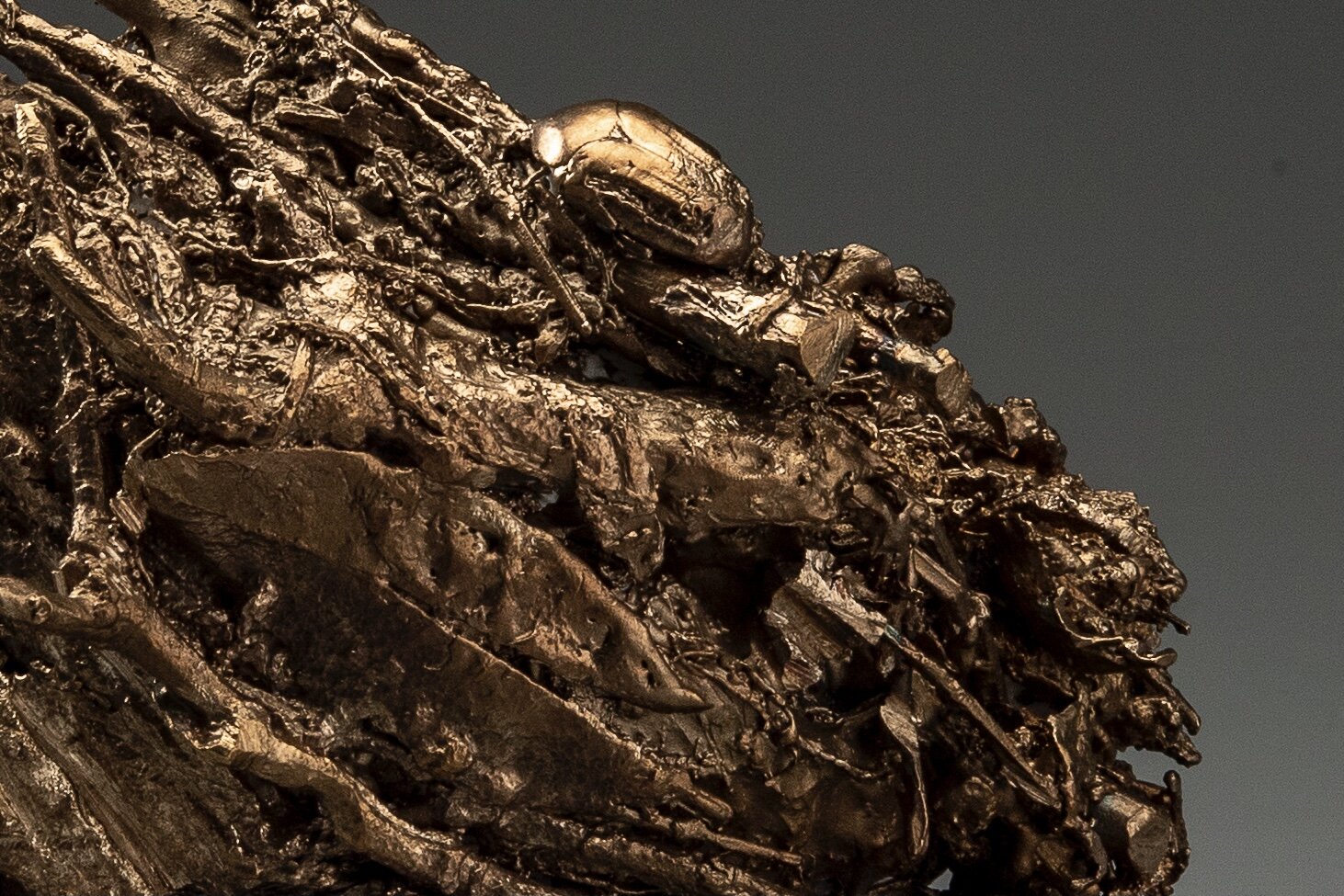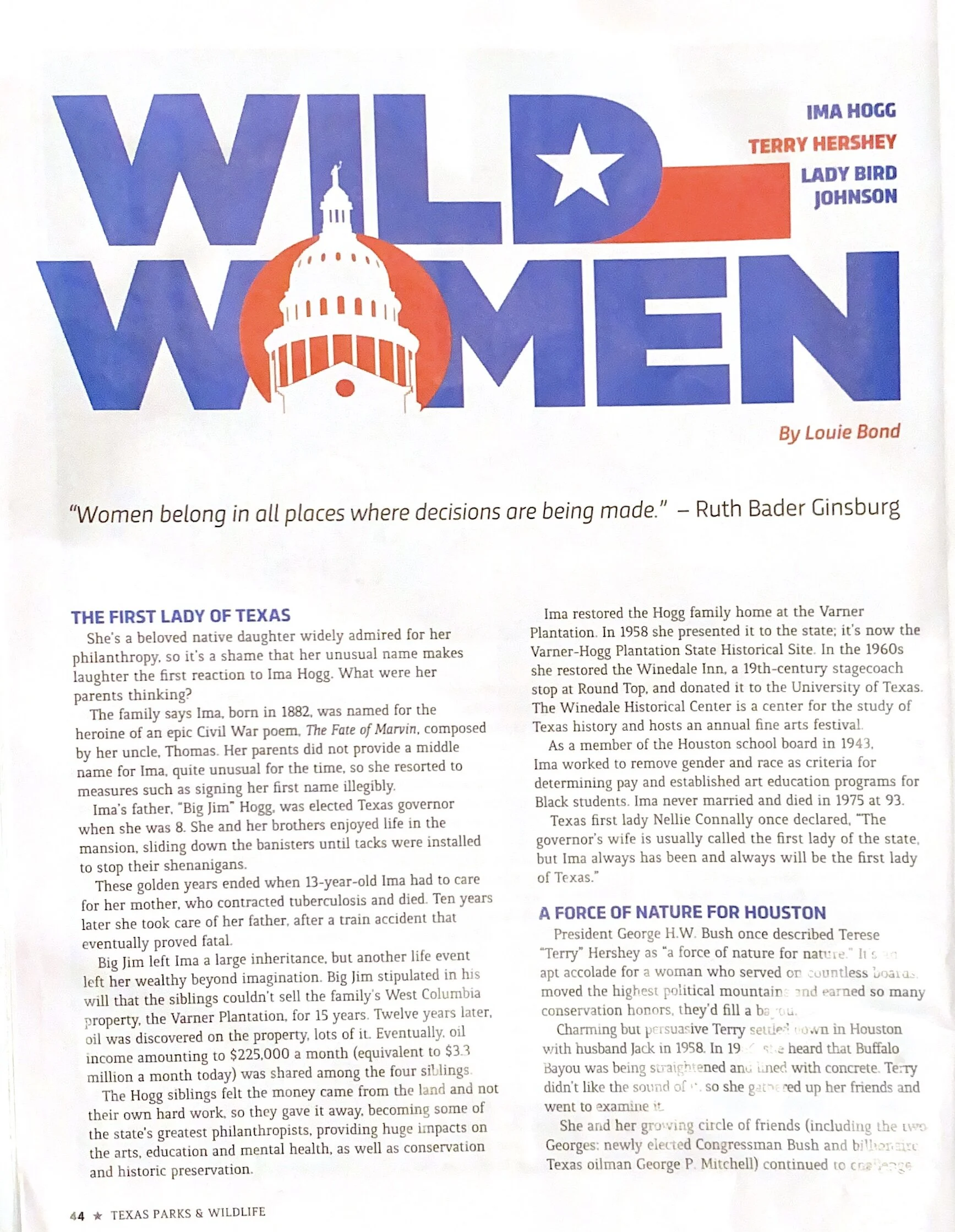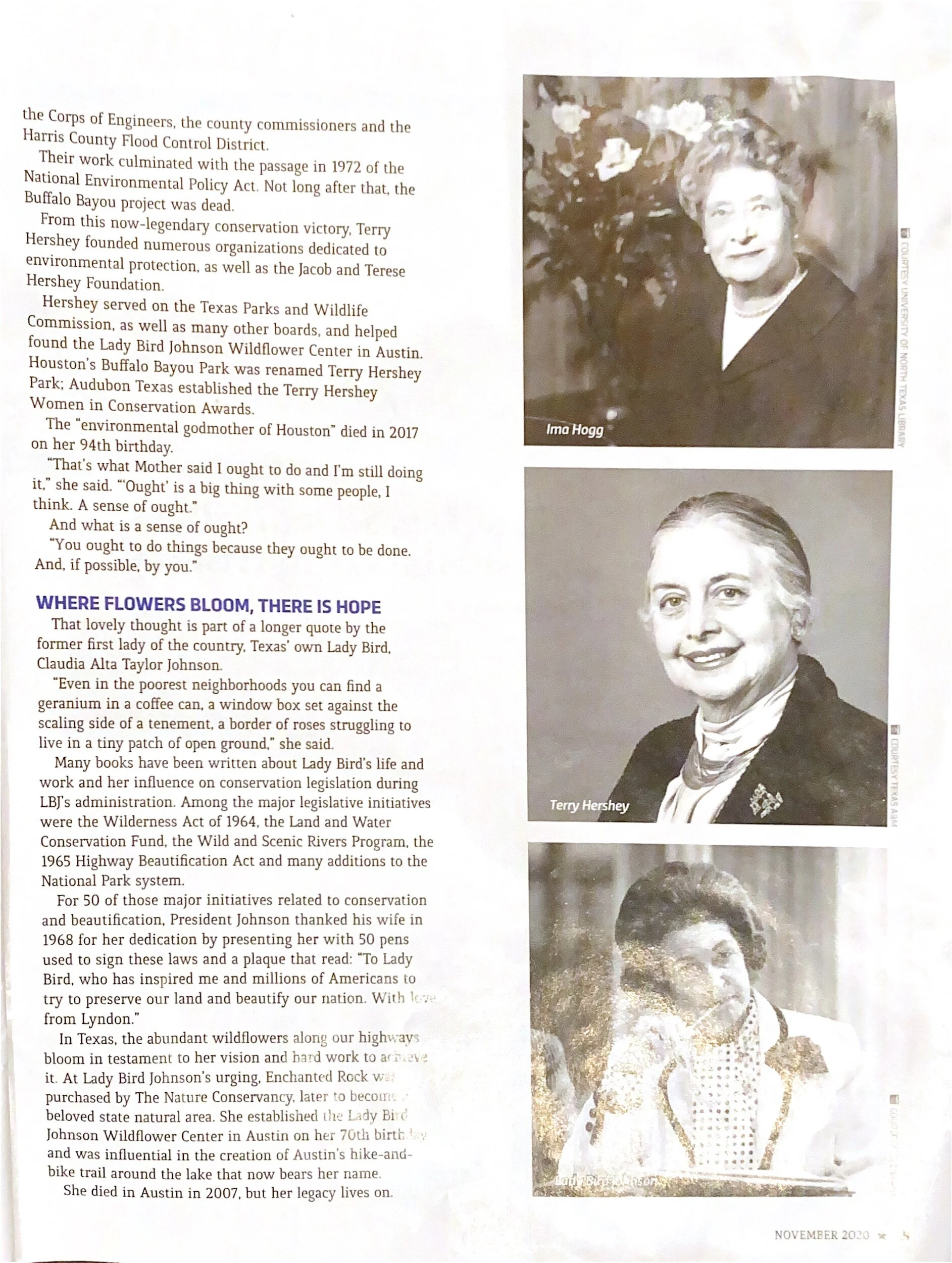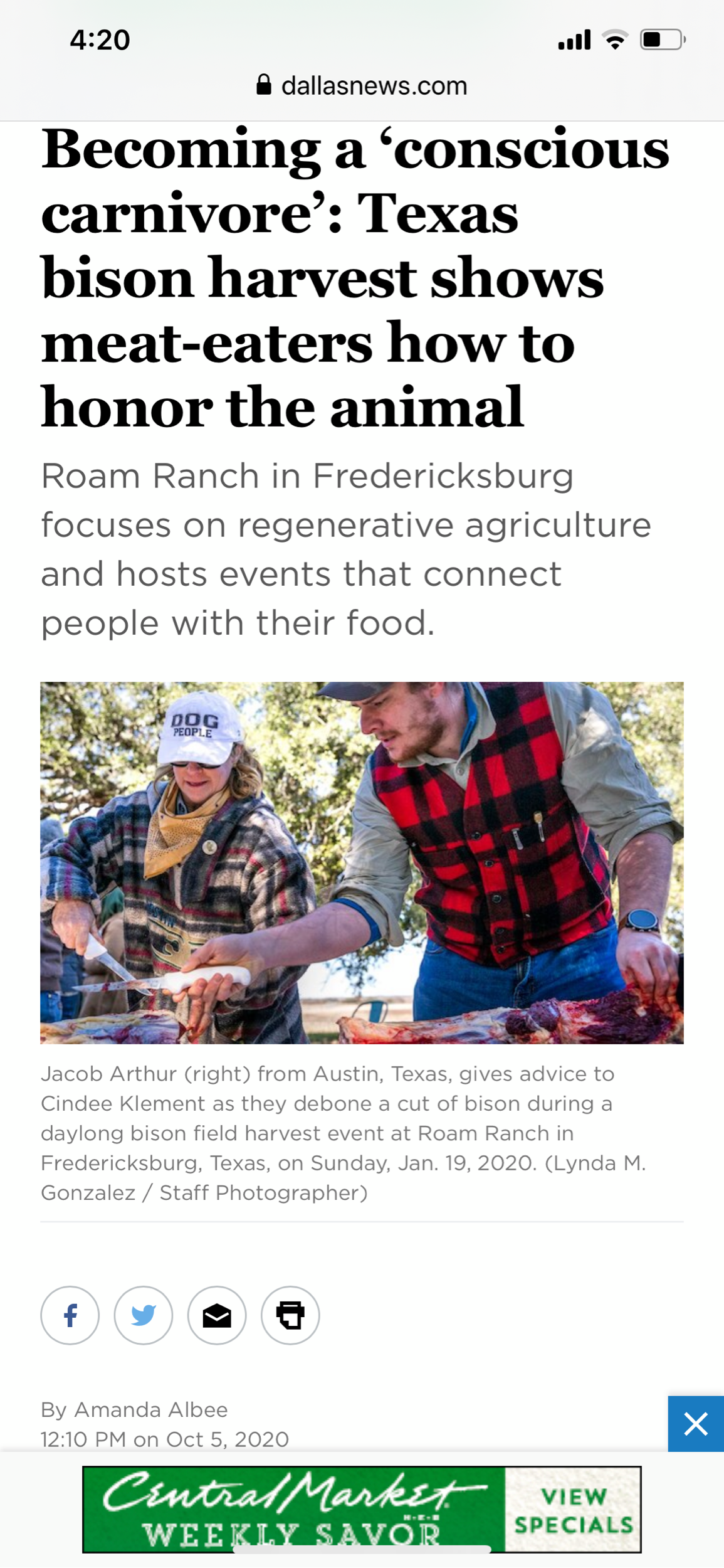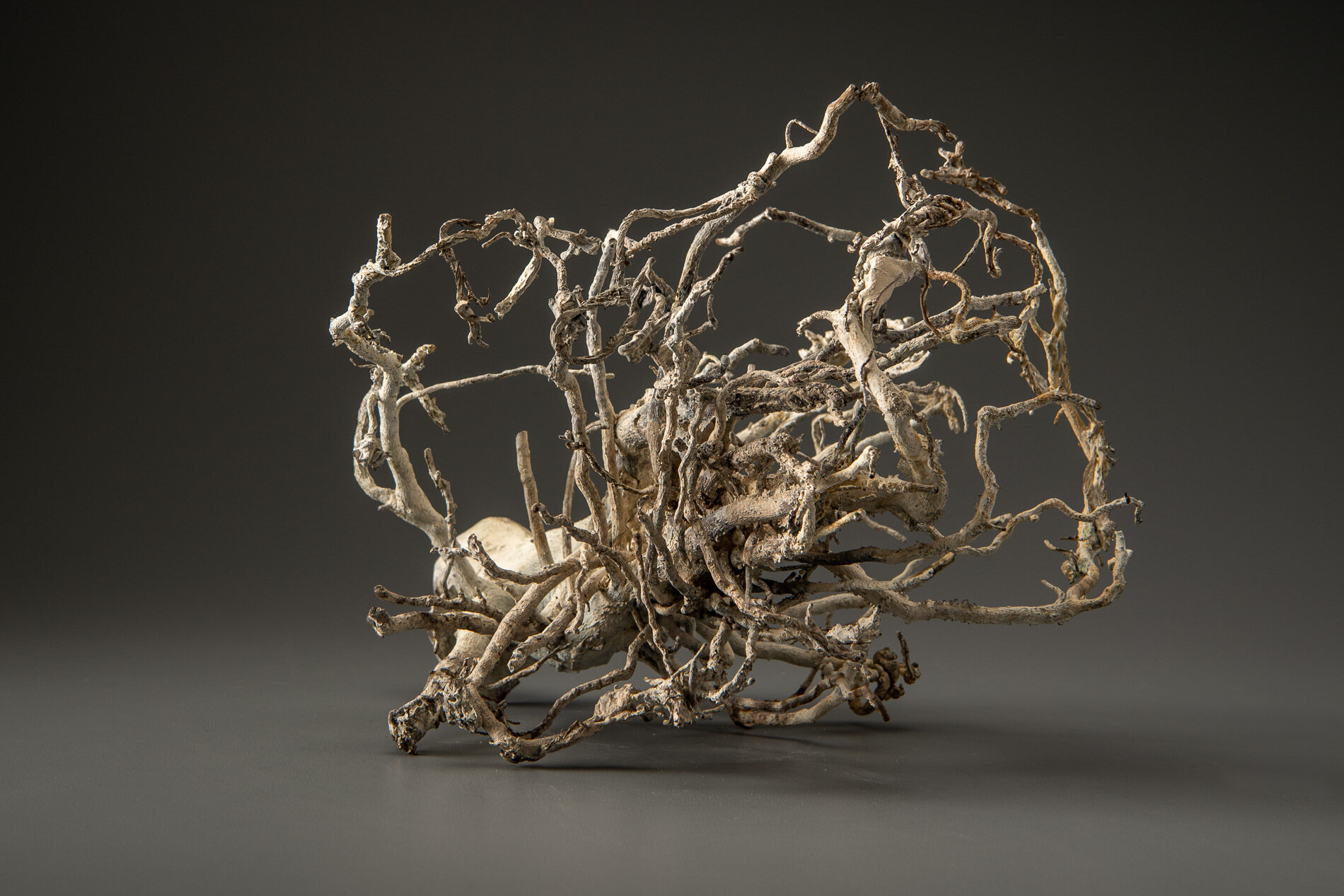Termites - to quote @gjklement,” termites are the ultimate grazers” last week, after we harvested our turkeys @roamranch, we went on a hike along the pastures to Indian Cave Creek. Along the way, we saw an abundance of armadillos eating termites. This trip was my 6th trip to the ranch and the first time to see any armadillos on the property, much less numerous armadillos or notice any termites. It is a sign the soil is regenerating - it is a good thing. Armadillos play an essential role in the Texas landscape both in agricultural settings and in urban population centers. They eat Termites keeping them in check. The termites are essential in building functioning ecosystems. As an art activist, I want to change the way we see nature. #regenerativeagriculture #regenerativeart #cindeeklementart #bioart #cobservationart #artactivist #texasartist #houstonartist #womansculptor #art #sculpture
Why Houston is in the perfect position to save the bee
Rural areas are highly impacted by the unanticipated consequences of our industrial agriculture’s dependence on chemicals that weaken bee’s immune systems. Urban bee populations can be more diverse than in rural areas. Researchers are finding in cities such as Chicago, Berlin, Berkley, and Melbourne that have reimagined their parks, neighborhoods, city centers, vacant lots, street medians, and rooftops planted with native flowers, grasses, and fruit, and vegetables support healthy, vibrant wild native bee populations.
In the US, there are four thousand native bee species. They pollinate over three hundred times more effectively than honey bees. For example, A single female Leafcutter Bee visits 100,000 plus blossoms per day whereas a honey bee visits 50-1000.
Houston covers 600 square miles of land and has one of the longest growing seasons in the U.S. As it continues to sprawl across Texas, its gardens must increasingly become a refuge for native plants and animals. With 2.3 million people living in the most vital economic, cultural center of the south, we can become the most critical urban native bee habitat in the United States.
I have spent the last year and a half studying the bee situation as it pertains to my art and my interest in regenerative agriculture. I am determined to take this knowledge and save the bee in urban settings.
With Houston's land size, population, and location in the Sunbelt like it or not-we are impacting the bee population.
ADDITIONAL LINKS
If Cuba can create urban gardens to feed its poor can you imagine what we can do
Symbiosis building soil life.
How do you build soil health without having the luxury of animal impact. It is one thing to build soil health on a bison farm. The microbes in the the the bison, turkey, pig and chicken dung builds the life in the soil. In the sculpture garden at Lawndale I am going to use LEAF MOLD COMPOST. This product is produced primarily from recycled leaves, with a little grass and horse manure mixed in, a touch of fruits and vegetables. After a long slow compost it will be rich in beneficial microbes. It will help save water and promote healthy soil. I was going to wait until early spring before we replanted the garden. However, Sunday Lawndale is having it's Sunday brunch fund raiser. And this is in the day if Covid 19 so the event is outside. I noticed that the heavy rains of late have compacted several areas in the beds and washed away some soil. It will be an opportunity to to talk about living soil,
I spent time researching different types of compost and mulch. Natures Way Resources compost native plants, is locally owned and located in the Houston area. The owner is a soil scientist. I had a long conversation with him today and he really knows living soil. I can't wait to see life return to the garden.
Here you can see how the soil is wearing away without having plants/roots hold it down. You can also see how the rain hitting it had compacted the ground. When the soil becomes compacted it stops absorbing water. .
The goods
The tools
A prairie rising
Armand Bayou Nature Center
The Armand Vayou Nature Center is a great example of the ecology and restoration of a local coastal tall grass prairie. It is great to see Texans committed to preserving natural systems. With the social unrest, a universal pandemic crippling our economies I can’t help but think about what we can learn from biological systems; the importance of species diversity, the importance of healthy bacteria, the importance of whole organic foods, the importance if finding a balance between humans and wildlife in all spaces including urban population centers. What that looks like is the focus of ny 2021 work.
After seeing the above article I was sitting at a stop light when I noticed this grass preserving in a sea of asphalt. Nature is amazing and will always win. Our challenge as humans is to learn how to live with it, preserve and respect it. In the end nature will always win. We can incorporate the coastal prairie landscape into Houston’s urban landscape.
Photo shoot
As a sculpture, I love-love-love photo shoots. It is rewarding to see work in their best light. Some pieces take months to year's to complete. That builds up a lot of anticipation. @nashb photographs my sculptures. Right after Covid 19 took over our world his photography studio caught on fire. Since then he demolished the ruins and rebuilt the space. It is beautiful. Nash takes the time to get the perfect lighting for each piece no matter how small. #symbiosis #photoshoot
Nash setting up for Root to Water
Tall pieces are not easy to shoot.
That is a pile of dirt from one of ny next projects ”Simbiosis”
Happy Soil Day.
Happy National Soil Day. Notice the length of the root system of this turf grass-just a few inches. 👎
🤔
The image I posted is not soil to be celebrated.It is what I call mindless conformity 🤨AND - now for the good news- 🌱☘️🍀☘️🌿
It is an opportunity to help save our planet and that we should celebrate.
Let me explain- this is the typical ground cover that covers 99.99% of the homes in the United States. It is a mono-crop of turfgrass. Monocrops are not healthy for soil. Mother Nature needs diversity to be healthy. To go against nature, homeowners have to apply chemical inputs to keep their monocrop turf grass looking perfect. These fertilizers, fungicides, herbicides, and pesticides kill all the living matter. They also kill our insects and valuable Keystone species.
In contrast, healthy soil, especially on the coastal prairie, is a sponge for soaking up rainwater and keeping our planet cool. Houston was a coastal prairie covered in native grasses that had massive roots systems. Some extended 18’. The coastal prairie has the capability to absorb massive amounts of moisture/water. They also act as a filter to clean the water and retain water. Water held in healthy soil is how the planet cools itself. Healthy soil also sequesters carbon out of the air and puts it back into the soil. The coastal Prairie plays a large role in the global environment. Houstonians have paved, asphalted, and covered in turf grass 600 square miles that makeup Houston. Reimaging urban landscapes is an opportunity to save our planet. Turfgrass covers more acreage in the US than farmed land. 🤠 this is an easy way to comply with mother nature. I am using ny art to find ways to reimagined urban landscapes to work with mother nature Healthy soil= healthy people. Happy soil day. #cindeeklementart #artactivism #bioart #soilart #art #conservationart #soil #regenerativeart.
Herman Park is getting in touch with it’s Texas Coastal Prairie heritage. - yahoo!
Your 💵 is your voice.
People ask me all the time what can we do to restore balance in the environment. And I tell them ”where you spend your money directly impacts the environment.” This Christmas give a lovely gift to someone you love that will generate our natural resources.
Shoutout HTX
Anytime an organization or individual takes notice of my work it is a gift. Thank you Shoutout HTX for supporting me and other local artists.
Couped up energies
Films on Houston's natural ecology - I can’t think of anything better to focus our couped up energies on than learning about our native landscapes. When the land is unhealthy, it is impossible for the species that live upon it to be healthy. I hope these films will inspire new ways to care for our urban landscapes. 🐛🐝🌺🐞🐸🐠🦋🐃🕊 have a safe masked day.
Army Corps of Engineers study
The Army Corps of Engineers study to reduce flooding risk does not consider utilizing any nature-based solutions. Here is a fascinating discussion of nature-based solutions that will not cost $1 -$12 billion.
“How fleeting are the wishes and efforts of man! How short his time! and consequently how poor will his products be, compared with those accumulated by Nature during whole geological periods.”
—Charles Darwin, Origin of the Species
I was already working on this piece and the artist/activist/conservationist statement that it visually supports. I am excited to get it photographed and out to the public. There is no question that Charles Darwin had it right. Before we spend $12 billion and wreck the Katy Prairie and Buffalo Bayou let’s review a study by bioengineeers.
”We see nothing of these slow changes in progress, until the hand of time has marked the long lapse of ages”-Darwin
Darwin’s observance is no longer correct, As we continue to expand our cities we have have ramped up the hand of time, we are fast-forwarding and witnessing evolution. This can be good or it can be bad. Millions of species going extinct on our watch is not good; there is a benefit to seeing the effect of our actions. This knowledge is power, join me and decide to change the way we see urban environnents, and act accordingly. We can write our own evolutionary script. We can return to protecting natures .
Reimagining urban landscapes- how plants and animals are evolving in cities.is an eye-opener.
Future inspiration
World of Hum- a humdinger
Keystones in El Paso
50” x 10’
watercolor monotype
Research- eradicating rats and coconuts
Another conservation benefit from COVID 19 - Sea Turtle numbers are up during 2020
It is amazing how naturere can reguvinate itself when humans step back. We should ask our selves what does this tell us? How can we benefit from this observation?
Green turtle nests:
2020: 8,110 (unexpectedly high for a "low year")
2019: 15,784 (record, "high year")
2018: 1,230 (typical "low year")
Loggerhead nests:
2020: 12,968
2019: 10,813
2018: 11,901
Leatherback nests:
2020: 40
2019: 36
2018: 17
These watercolor monotypes are the pieces I discovered my technique on.
Fragility study 30” X 22”
Here I experimented with how wet my paper was. I love the running color on this particular piece. It would not work for everything.
Fragility- Kaleidoscope
2017
Watercolor monotype
30” X 22”
Same Time Next Year
Detail of common beetle from my urban Explorations.
The sidewalks in my neighborhood are my nature trail. I walk with my eyes on the prowl for intriguing insects, exoskeletons, insect wings, feathers, dried flowers, twigs, leaves, seeds, and pods — things my children’s eyes taught me to find during our walks together over the years. Since 2013, these biological mementos have found their way into my bronze work in the molds of nests. Each piece is a reflection of that year’s ecology and records the time and movement of environmental restoration. Initially, I was unaware of the landscape around me, but as my art dove deeper into environmental restoration and Hurricane Harvey changed our city, I realized that my days are, in fact, full of sterile surfaces. With COVID-19 quarantine, children in my neighborhood started venturing outside and looking for things to capture their curiosity. Delighted with their new interest, I realized that the green spaces and puddles children explore now are no longer filled with a diversity of life; the box turtles, bullfrogs, tadpoles, bumblebees, and assortments of flitting insects have evaporated with the spray of insecticides and herbicides in our neighborhoods. The selection is reduced to cicadas, the common beetle, honeybees, a rare native bee, and an abundance of Cuban lizards that dwell in turf grasses, boxwoods, crepe myrtles and oaks. I have awakened to cultural landscape uniformity. COVID has changed how I see the need for perfect lawns; the dirty truth is mosquito home-misting machines, obsessive weed control, artificial turf and a lack of plant diversity have turned urban neighborhoods into manicured monocultures for humans exploring video games. These habitat changes in massive population centers are fast-forwarding evolution: loss of wildlife habitat is one of the biggest threats facing many animal species. This does not have to be—it is a societal choice, the ability to speed up evolution can go both ways. Through my works – Lawndale’s Symbiosis, Endangered Knowledge: The Soul of Humus, Gust, World of Hum, Rumblings and Root to Water—I am committed to creating work that educates and helps communities change how we landscape our cities to include valuing the natural world and turning back the evolution. In Dirt to Soil, Gabe Brown quotes Don Campbell, “If you want to make small changes, change how you do things, if you want to make big changes change how you see.” When I come across intriguing flora or fauna on my urban trail, albeit few and far between, I see them as evidence that can inspire a revolution in the landscape. If they are expired and will not decompose, I collect them. I see these bronze cast nests as urban wildlife fossils—biographies, every year a chapter recording Houston's environmental awakening. As an optimist—environmental—art—activist my work focuses on revealing endangered knowledge to change how we see urban landscapes and activate cooling the planet through our cityscapes. As migratory birds return year after year to build nests and raise their young, I return with optimism in my step. I envision witnessing the return of four hundred plus butterfly species and eight hundred bee species native to Texas. I can see this returned wildlife capturing my future grandkids' imaginations. I will tell them the story of how insects almost disappeared and how every yard is a micro-ecosystem and matters. I imagine their hands building nests with a diversity that I cannot imagine. I hear their voices telling me in one breath about the fuzziest-biggest bee they ever saw, covered in golden dust nesting in a patch of ground beneath the sunflowers not far from the silverleaf nightshade. I see them bringing me a tail-feather from a Red Shoulder Hawk and asking, "what does it hunt" and is it the bird that sounds like the squirrel's screech. After a rain, I see them finding two bullfrogs attached and their tiny ribbons of floating eggs in a pond. I hear them tell me not to touch the caterpillar of the southern flannel moth, and asking me, “how does it sting?”. At the low of evening when dragonflies hover; I will watch as they study the night heron’s quiet solitary stance as it stalks small citizens of the grass, I will smile as they question the raucous warnings of ravens and the scoldings of nut collecting squirrels. I will feel their excitement when neighborhood raccoons appear from storm sewers and scavenge treats from dog bowls and opossums waddle fence lines, searching out grubs and open garage doors. I will follow their eyes when the silent patrol of the lone coyote visits the shadows of our boulevards from their bayou bound dens. I let them sleep outside and hear their heavy eye lids ask, why do the owls ask who? I listen as they wake up to a concert of white-winged doves. I will feel peace when they are wise to nature.
SAME TIME NEXT YEAR 2019
4.75” X 10” X 5.5”
bronze
SAME TIME NEXT YEAR 2018
5” X 9” X 7.5”
bronze
photo by N. Baker
SAME TIME NEXT YEAR 2017
4" X 13" X 8"
bronze
photo by Nash Baker
Coffee with inspiring Texas Women conservationists.
Curtis reads everything. When he finds articles, I will enjoy heaves them for me on the kitchen counter, where I have my morning coffee. This article is from Texas Parks and Wildlife. I had coffee with these Ina Hogg, Terry Hershey, and Ladybird. I am in awe.
They were strong, forward-thinking women. You would not believe how hard it is to get people to plant flowers.
I wonder what advice they would give me? Probably don’t be so opinionated. 😜🐝💐🌺🌻🐞🦋🐌🕊💧🐠
